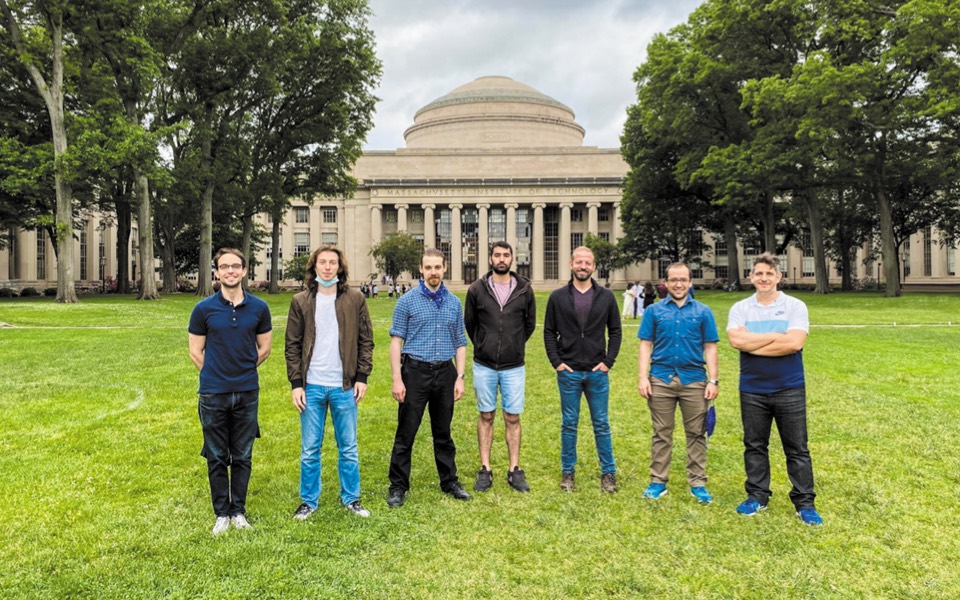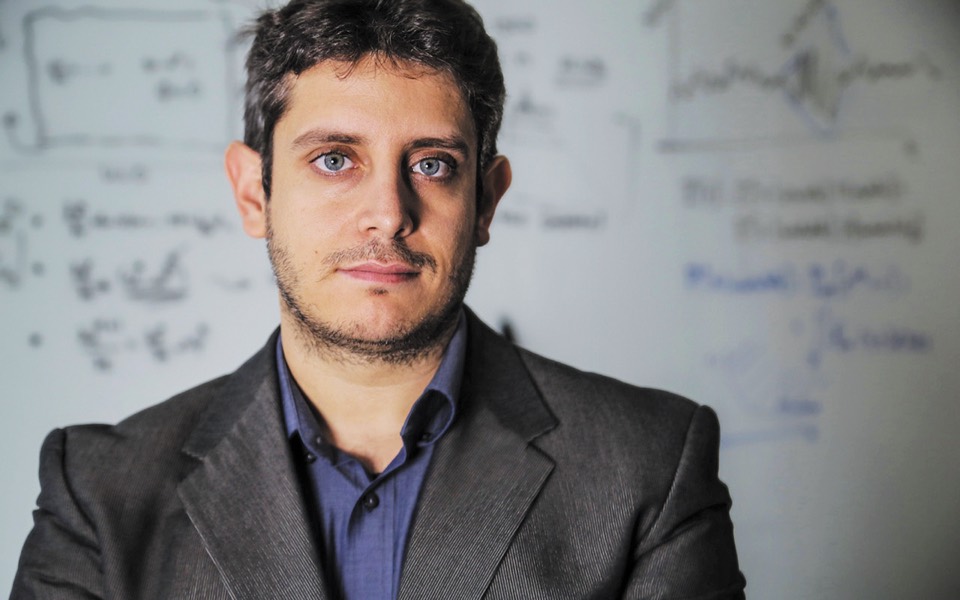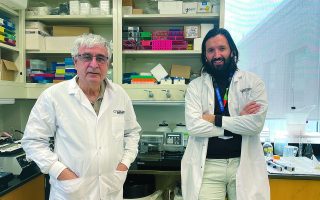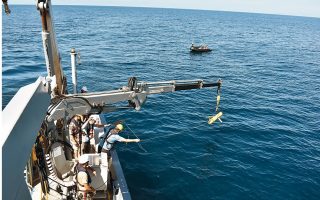Greek scientist in USA brings order to chaos

His specialty is predicting extreme events, but also designing solutions to mitigate their impact. Themis Sapsis, an associate professor of mechanical and ocean engineering at the Massachusetts Institute of Technology (MIT), has developed a complex methodology that allows him to calculate when an otherwise unexpected destructive natural or man-made event may strike, on land, at sea or in the air.
Treacherous seas, intense heat waves and storms, large-scale pollution disasters and sudden species extinctions: The events Sapsis deals with defy statistical equilibrium. They are fluid and chaotic, meaning that they can be impacted by infinitely small parameters and are impossible to predict using traditional computational means.
Conversing with him was an exhilarating dive into the fascinating world of chaotic flows, random events and probabilities, whether it is in an ongoing event like a forest fire or extremely rare phenomena that develop gradually over a long period of time. “In a forest fire you cannot make a single prediction with absolute certainty, anticipating exactly the direction in which the fire will spread, as small-scale wind currents are a chaotic system. Instead, you quickly put together a small number of scenarios with all the possible outcomes, even those that present a higher risk but with a lower probability of occurring. These are the most sought-out predictions, as the most probable scenario is potentially less useful and if you take action based on that you may be putting many lives at risk,” Sapsis tells Kathimerini.
More important than any immediate prediction is calculating the probabilities of an extreme event occurring in the long term. “Predicting a heat wave or a downpour five or 10 days before it occurs does not leave us with any time to take precautions. But predicting a large-scale extreme event that will occur over the next 12 years allows for the creation of plans and safety measures to mitigate any such disaster. This holds for other systems as well, for example a ship, oil rig or aircraft that may have to deal with a sudden huge wave or unprecedented turbulence. Our job is to develop the computational methodology that can quickly locate the worst event that can take place in the expected lifetime of the ship, rig or aircraft, so it can be designed to withstand these extreme destructive events from the very start,” he explains.
 Sapsis conducts research for three branches of the United States Armed Forces (the Army, Navy and Air Force). “It concerns warships and rescue ships that travel through storms and therefore have a greater chance of running into an extreme event. This does not affect one ship or one aircraft or one helicopter, but hundreds, so the possibility of critical damage is multiplied. As for the extreme event, it could be, as we call it, a 100-year, 500-year, 1,000-year or 10,000-year event. This does not mean that it will happen in 100 or 10,000 years; it could happen a lot sooner and this is something manufacturers must keep in mind,” notes Sapsis, who is also the principal investigator at MIT’s Stochastic Analysis and Nonlinear Dynamics (SAND) lab.
Sapsis conducts research for three branches of the United States Armed Forces (the Army, Navy and Air Force). “It concerns warships and rescue ships that travel through storms and therefore have a greater chance of running into an extreme event. This does not affect one ship or one aircraft or one helicopter, but hundreds, so the possibility of critical damage is multiplied. As for the extreme event, it could be, as we call it, a 100-year, 500-year, 1,000-year or 10,000-year event. This does not mean that it will happen in 100 or 10,000 years; it could happen a lot sooner and this is something manufacturers must keep in mind,” notes Sapsis, who is also the principal investigator at MIT’s Stochastic Analysis and Nonlinear Dynamics (SAND) lab.
“I was in Manhattan in 2012 when a powerful hurricane hit New York that simultaneously caused a tidal surge, a rise in the sea level and tall waves that swept over the 8-meter-high seawall protecting an electric substation in Lower Manhattan where a transformer exploded and left the area without power for 12 days. It was an event that occurs once every 400 years, and it happened then,” he says, citing an example of one such event.
Predictions, however, are never easy in a chaotic system. Essentially, they take on the form of infinite possibilities, the computational testing cost of which is so overwhelming that not even the most advanced computers can handle it. So, what is it that Sapsis and his team do? They quantify uncertainty, meaning that with the complex computational methods he develops, with the help of applied mathematics, probability theory, big data analysis, artificial intelligence and machine learning, they pinpoint that “crucial, very small number of realistic outcomes that have even the smallest chance of occurring.”
Ocean oxidation
The ability to narrow down the infinite is well illustrated by a project Sapsis and his team are carrying out on ocean oxidation. “Our goal is to find those areas in the oceans that display higher rates of oxidation, which has frightening consequences on marine life. We do not know where these locations are – seas are huge and constantly shifting, and it would be impossible to find them with the limited number of small submersible vessels we use to collect samples. But with the algorithms we have developed we can utilize this small fleet of vessels to identify the problem areas with a great deal of accuracy. The vessels cooperate with each other and the marine environment, and, based on the data they collect, decide where the most probable locations of extreme rates are and move toward them,” he explains.
An extreme event is not always negative or destructive, however. It could also be a best-case scenario. For example, Sapsis and his team support the work of biologists on transforming one type of cell into another – i.e. skin cells into nerve cells. “Approximately 20,000 genes with an unknown number of properties have to be tested in all possible combinations to find the best possible result, something extremely rare. We apply our algorithms to locate extreme phenomena in these systems as well, except that in this case an extreme event is not a disaster, but the best result,” he says.
Sapsis was recently awarded in the Basic Science: Mathematics category by the Bodossaki Foundation, which has distinguished 51 outstanding Greek scientists since 1993 for their work. “This award is a great honor and a recognition, but it is also a responsibility, as it puts me in the same exclusive community with distinguished scientists who have excelled. Many of these scientists are role models,” he says of the award from an institution that “celebrates scientific excellence as a collective ideal and not just as a personal distinction.”
Sapsis graduated from the National Technical University of Athens’ School of Naval Architecture and Marine Engineering in 2005 and received his PhD from the Mechanical Engineering Department at MIT in 2011. He was an assistant research scientist at New York University and in 2013 returned to MIT, where he now is an associate professor. He has so far received over 10 awards and distinctions.





